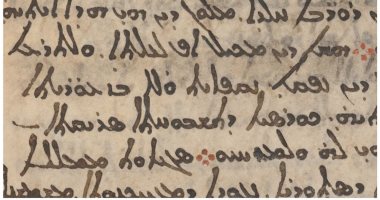CAIRO – 27 October 2022: The library of St. Catherine's Monastery continues to supply the world with many discoveries.

The manuscripts in the library that have recently undergone digital processing reveal secrets dating back to ancient times. New evidence of the reliability of the lost Star Catalog of the ancient Greek astronomer Hipparchus has emerged thanks to multispectral imaging of the Codex of Tyros and subsequent decipherment of the Codex of St. Catherine's Monastery, which is hundreds of years old and allows major progress to be made in rebuilding the catalog of Hipparchus, according to a British study led by the British astronomy expert Peter Williams.
A manuscript found in St. Catherine's Monastery asserts that the Star Catalog was originally based on equatorial coordinates, and that the Star Catalog of Ptolemy was not based solely on data from the catalog of Hipparchus. Finally, the numerical evidence available in the manuscript corresponds to the true precision by one degree from the true stellar coordinates, making the index of Hipparchus much more accurate than that of his successor Claudius Ptolemy.
The lost Star Catalog of Hipparchus is best known in the history of science as the earliest known attempt to record the exact coordinates of many celestial bodies observable with the naked eye and evidence of Hipparchus' content is scarce.
As for the new discovery, it was established by the multispectral depiction of the ancient Greek manuscript known as Codex Climaci Rescriptus, located in St. Catherine's Monastery, where calligrapher Peter Williams first noticed the existence of astronomical measurements for the year 2021. Indeed, some of the papers in this manuscript can be dated to the fifth or sixth century.
According to the study published in the Sage Journal, the first section shows the extension of the planets, expressing each of them as a value in degrees and coordinates. The second section names the stars and repeats their maximum coordinates, so it seems likely that the numeric data in the first section was originally derived from the coordinates in the second section.
Comments
Leave a Comment